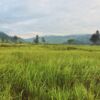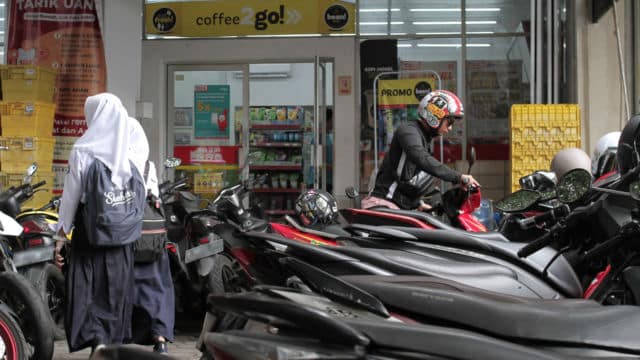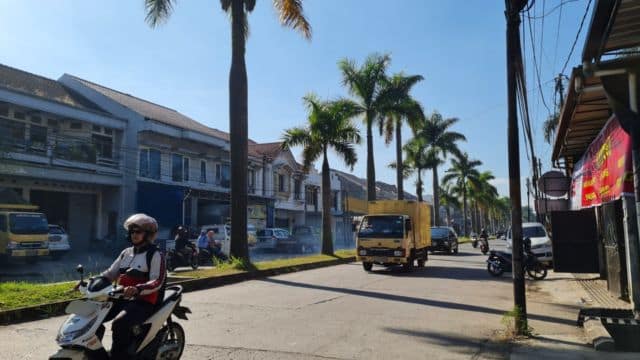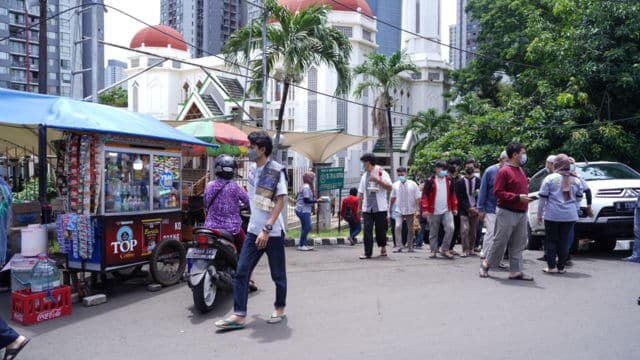The Best Light Show Of All
Photo: Sasti Gotama
Havana Hills | 1,666 words
Translated from Bahasa Indonesia by Lise Isles
Last Friday, Abang, my son, asked me to pick him up after Outbound, a program of outdoor activities, usually done in nature, which is organized by his school. “Don’t be late, Mama. Pick me up right on four”, he told me in the morning as he left the house. He and his school-friends were heading this time to a hill outside the center of Cilacap, where we live. When I heard the word “hill”, it was like something in me flowered and sprouted.
It’s been a long time since I’ve gone hiking in the hills: the last time was three years ago in Wonosobo. Understand that Cilacap sits on the south coast of Java, around six meters above sea level. So you can well imagine how the sights to see immediately around me are all either beaches or mangrove forests. I left earlier than I needed, around 2pm, so that I could hike up the hill while waiting for Abang to finish his excursion.
I revved the car’s engine as I sung airily to myself. In my mind I was imagining trees tall and verdant, the song of wild birds, orchestras of massed cicadas, flowers of multifarious colors, and the fragrance of humus allied to the scent of wet grass. If I was lucky, maybe I would see the sun set over the foothills.
After around 14 kilometers, I saw an arrow sign pointing in the direction of the hill. After driving along a side road, which was barren and dusty, I arrived at a parking lot. In front of an entrance booth, I laid eyes on a throng of red, yellow, and green, that turned out to be neither flowers nor trees, but a crowd of middle-aged women wearing wide multicolored hats. Instead of hearing the chirping of wild birds, my ear was invaded by the voices of these women debating energetically one crucial topic, apparently far more important than global peace: where they should roll out their mat to have lunch. After reaching an agreement, they strolled through the entrance gate which had on it the words “Outside Food Prohibited” while carrying their tiffin containers of rice, meat and vegetables.
After buying a ticket and entering the gate, I moaned in disappointment. There were no tall trees, no chirping of wild birds, no aroma of humus. What welcomed me was a concrete staircase, multicolored, duplicating the colors of the rainbow. There were hundreds of steps, of uneven width – perhaps due to the contours of the hillside, which I later found out used to be rock-strewn and had been worked to grow lemongrass. As a replacement for the trees, to the staircase’s left and right stood decorative metal lanterns, at this moment not yet alight, and the long flags known as umbul-umbul fastened to bamboo poles. Loudspeakers installed at various points screamed out Javanese-language dangdut koplo songs, which fused with children’s shrieks. And various photo spots were spread around – a structure that made people look like they had angel wings when they stood in front of it, rainbow-colored swings, and a light tunnel.
I felt strange, and estranged – like Alice felt, maybe, when lost in Wonderland.
There are many other hillsides, aside from this one I had arrived at, which have likewise been turned as if by magicians’ tricks into Instagrammable destinations. In almost every remote corner of Indonesia, in fact, these Instagrammable spots are sprouting like mushrooms. People compete to serve up on their social media accounts the latest photos they take at such places. When the photos are uploaded, they’re accompanied by wise quotations, so that those who see them will be awakened – or perhaps made envious – and will become determined to visit the same spot. And, like that, the cycle repeats unceasingly. People come in droves not merely to enjoy the atmosphere, but far more because they wish to take photos and by doing so prove themselves. It’s better if they come as a group, in uniforms, and take their photos as a group too, because that will show they are part of a community, rather than people being torn apart by loneliness. By taking photos, they show they exist.
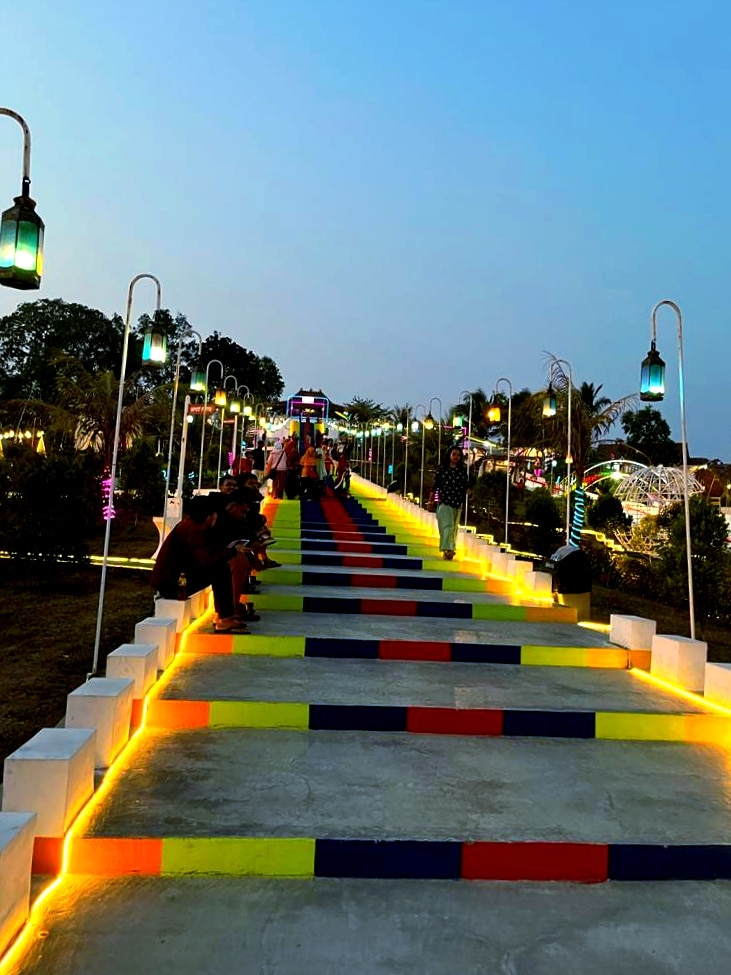
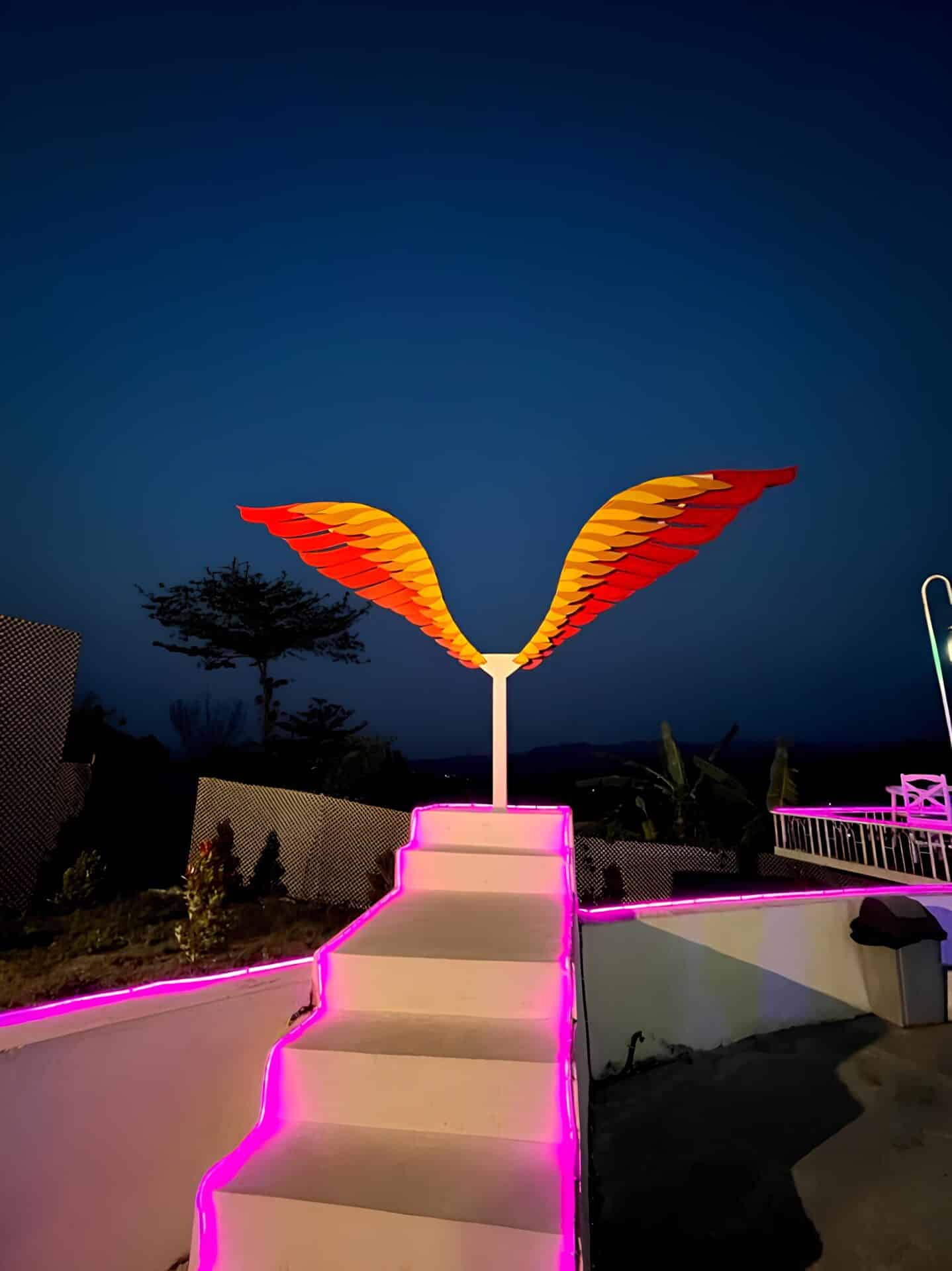
Business people have sniffed out the trend. Building such a photo spot that feeds these customers’ desire for “existence” is more cost-effective than building other types of infrastructure. You just need capital enough for some iron posts, some wooden boards, and paint of many colors, materials that can be formed into symbols of love or angel’s wings or world architectural marvels in miniature like the Eiffel Tower, Statue of Liberty or Egyptian Pyramids, and you can bring into being overflowing profits. Natural scenery, that’s naturally displayed, doesn’t attract interest from sightseers anymore. So business people are falling over themselves to transform beaches, valleys and hills into these Instagrammable destinations serving up synthetic attractions. And instead of offering beauty, they are creating eyesores, defiling the natural panoramas they’re built upon.
I tried to calm myself. Times have changed, I thought. Maybe such artificiality is what people really want. I focused on searching for Abang. I saw him from a distance, with his friends, crossing a wooden bridge fastened with ropes. I waved to him, and he signaled to me that his activities weren’t finished. I gave him a thumbs-up, then pointed to the top of the staircase, indicating that I’d wait for him there. Then I began hiking up that rainbow staircase, up to the hilltop.
After I’d taken just a few steps, someone tapped my shoulder. When I turned, a granny smiled eerily-widely at me. “Please take a photo,” she said, handed over her phone, and immediately posed with her group, all wearing a uniform of a shade of orange that would make a carrot feel insufficiently brilliant next to them.
In this country, it seems that people are obsessed with uniforms. Not only school-students, but every community has its own uniform, for example groups of women in RTs, arisan groups, and even groups of mothers waiting to pick their kids up from school. Sometimes special uniforms are designed just for tourist excursions. But, seeing this group of old ladies, it occurred to me that uniforms weren’t such a bad idea. At least if one of this group got lost, she would be easy to find from afar.
After taking their portrait roughly 121 million times, I resumed hiking up the staircase. At the top, I came upon a flat piece of land layered with – again – concrete. From here, though, I could bear witness to the sloping foothills, and further away, the city of Cilacap. More distant still, I could see a smokestack from a state-owned oil company. At its top a huge fire was burning, looking like Gulliver’s birthday candle, making me Lilliput.
As I stood there, the sun began to go down. A golden light blanketed the entire hill, so that everything looked fluorescent. A calmness descended. Then, out-of-the-blue, a group of teenagers invaded the spot where I was, giggling. It seemed they were searching for a panoramic view of the sun going down. They started to pose, maneuvering their bodies so it looked like they were pinching, hugging, or swallowing the sun. Instead of witnessing the scene with solemnity and raptness, they even turned their back on that astonishing natural phenomena, to ask their friends to immortalize their poses via the cameras on their phones. Once the pictures were taken their attention became absorbed in those phones – I suppose they were uploading the images to social media – caring not a jot about the sun, which grew lower and lower in the sky, until it was swallowed by a rush of clouds.
Suddenly I heard someone calling me. I saw Abang running and waving. “I’ve already finished Outbound. But can you wait here? I want to go on the slide”, he said as he pointed to a slide which looked like a gigantic, 80-meter-long tongue and which – again – was as multicolored as a rainbow. Without waiting for my answer, Abang paid for a ticket, infiltrated his buttocks into the middle of a rubber tire, and immediately slid down the slide rapidly while laughing merrily. Even I was taken in by this, and started to smile a little to myself.
Darkness fell, hugging the hill. The ornamental lanterns were switched-on. The dangdut music grew more and more thumping. Below, I saw people starting to queue to take photos with those lamps, which were glittering like objects from outer space. But I chose to set myself down in a thick climbing net that had been hung on the hilltop’s edge. Then I gazed up at the sky.
Above me, amidst the blackness, I could make out only three stars with my naked eye. Even though out there in the atmosphere were scattered billions of stars, their shine was defeated here by the light pollution, masquerading as stars, emanating from further down the hill. Nevertheless, those three stars were stubborn, it appeared, and were insisting on beaming out their rays so that I might stare at the resulting twinkling light. It seemed to me that what I was looking at was too extraordinary to simply view. I focused wholly on those stars’ existence with a tenacity, with a devotion. As I did so, the thumping sound of dangdut grew fainter, and the glow of the artificial lights down the hill grew cloudier. At that moment, I felt I was floating in the night sky with those stars, like a fetus who is calm among the undulating fluids of a womb.
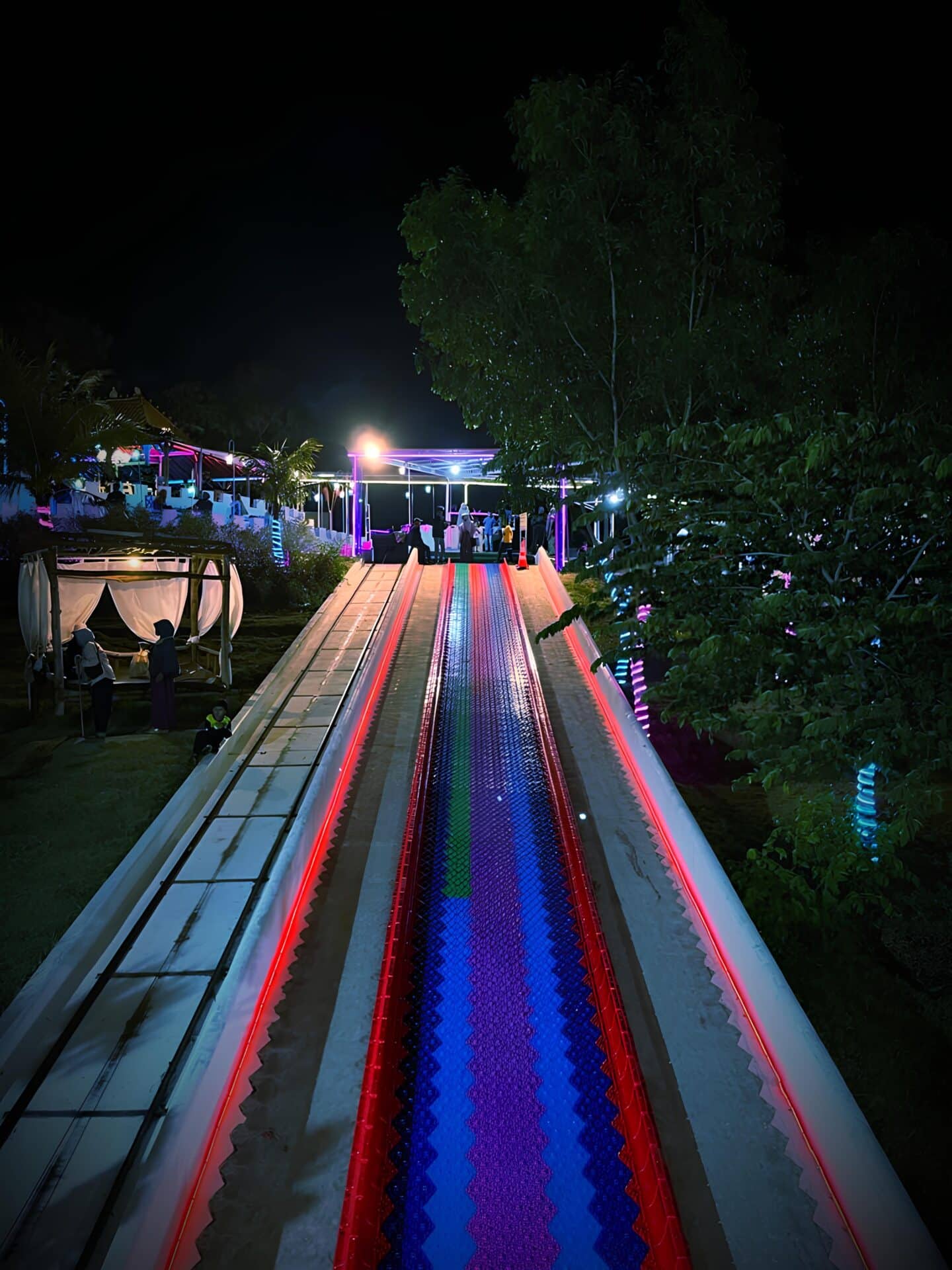
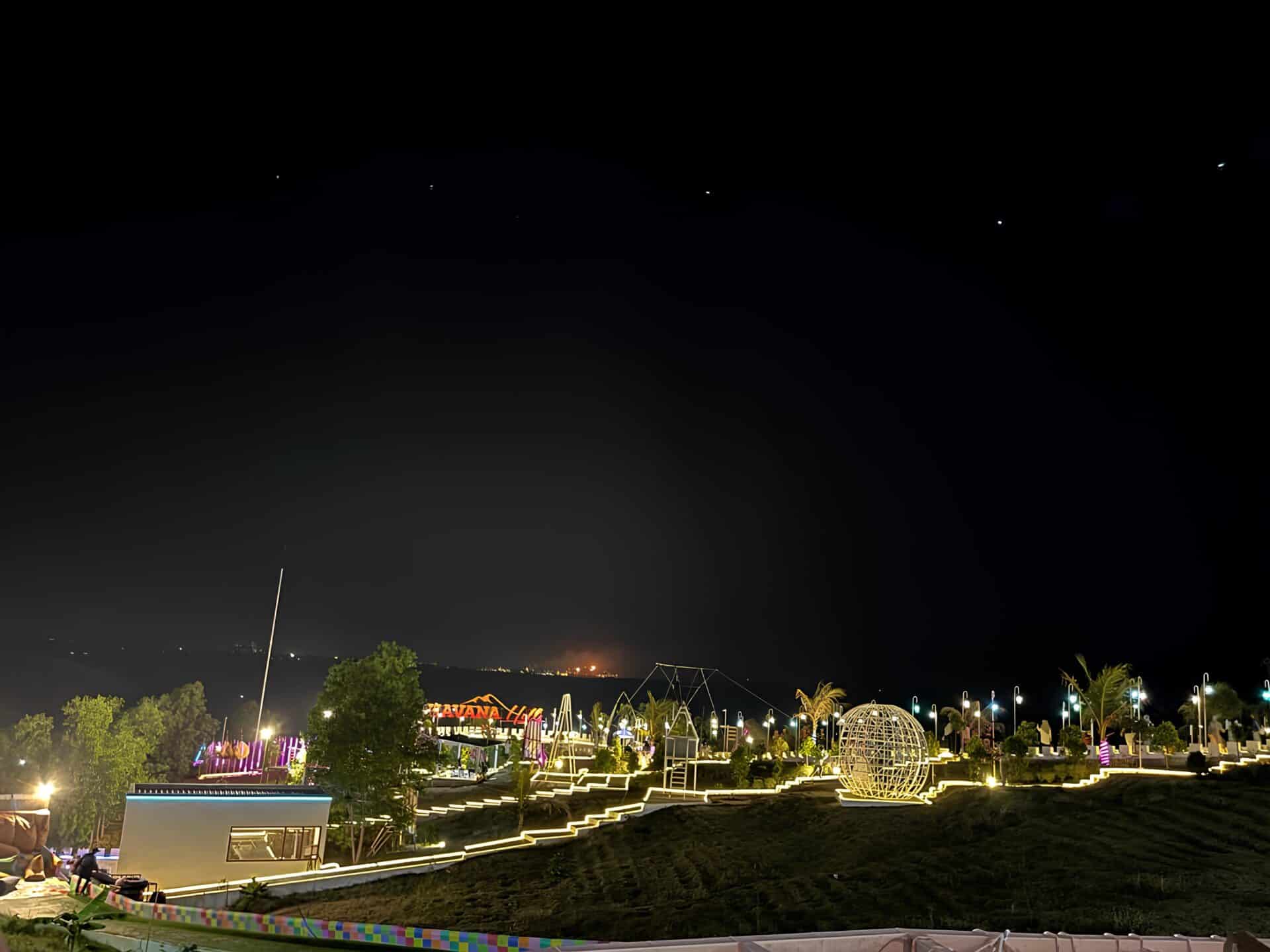
“Mama, let’s go there!” said Abang.
He’d arrived at the hilltop and wanted me to walk back down with him to the tunnel of light.
I shook my head. I patted a pillow to one side of me, signaling for Abang to sit and join me. Then I pointed up to the sky. “The more beautiful stars are the ones above.”
© Sasti Gotama
English translation © Lise Isles



